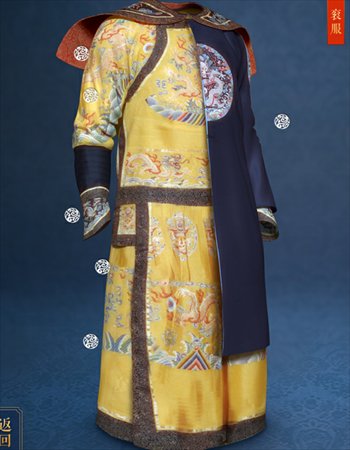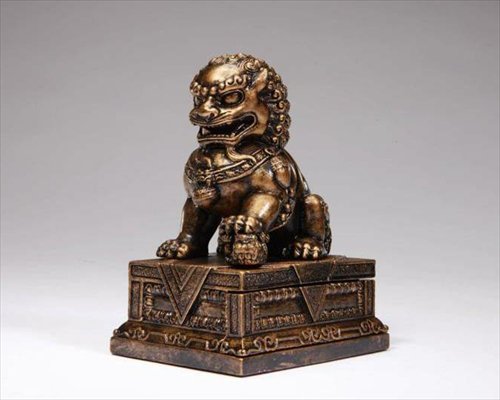Not so Forbidden City
Palace Museum taking steps to change its image

Bobby Keys Photo: IC

Top: A still from the Palace Museum's soon to be released iPad app. Below: Souvenir jewelry box Photos: Courtesy of the Palace Museum
Visitors to the nearly 600-year-old stately Forbidden City may have noticed that the former home of the emperors of China has become more approachable and even a bit adorable lately. Now the home of the Palace Museum in Beijing, a new program to make the museum more visitor friendly has altered the face of the once stern and foreboding imperial palace.
A string of beads once worn by imperial ministers as part of their formal attire have now been turned into a set of earphones; a waist belt used to signify rank during the Qing Dynasty (1644-1911) has been made into a handbag printed with the words "Traveling on orders from the Emperor"; folding fans styled after those used by the emperor himself can be found in the gift shop with the Yongzheng Emperor's (Reign: 1722-35) famous statement "We are such a man" printed on them.
These humorous new twists on traditional culture have been receiving unprecedented attention lately.
"Previously you could only look at the exhibits at the Palace Museum. But now these items let you take the museum away with you," said Shan Jixiang, curator of the Palace Museum, at a press conference in Beijing on November 21.
Another surprise has been the release of an iPad app for kids called A Day in the Life of the Emperor. The app's cute cartoon style and vast historical and cultural information made it one of the most recommended apps on the store within a day of its release. The app reached 110,000 downloads by its third day, becoming one of the most downloaded apps for October.
These items soon became a hot topic on social networks, as many praised the museum's efforts. This attention was also reflected by the huge pile of interview requests that Shan soon received, which led to his decision to hold the November press conference. While happy with the success of the museum's new promotional efforts, Shan explained that getting to this point wasn't easy.
Modern makeover
Previously, it was the souvenirs that could be found at the National Palace Museum in Taipei, Taiwan, that were all anyone would talk about. Highly praised for their creativity and originality, such as packing tape with the Kangxi Emperor's (Reign: 1661-1722) writing "We know" printed on it, mainlanders would go on crazy shopping sprees whenever they got a chance to visit the museum.
As the most important museum in China and one of the world's top five museums, numerous visitors to the Palace Museum in Beijing have wondered when the museum would make similar progress.
Hearing the people's call, Shan didn't want to create any old souvenirs, he set a standard for his staff "any ideas for creating cultural products must be related to palace culture and museum exhibits."
The new beaded earphones sold out quickly after going on sale in September. According to Shan, income from cultural products reached 600 million yuan ($97.5 million) last year, but this year that number is expected to reach 900 million yuan. However, he pointed out that despite this increase the museum won't see much in the way of profit, as it had invested a substantial amount of money into research and development.
This effort was not only focused on creating catchy souvenirs, but also on bringing the museum more inline with the high-tech digital age as well.
A great deal of effort went into designing digital apps. Although the museum's current app is aimed at children, it has information that can benefit adult visitors as well. It contains a detailed map of the Forbidden City, and an interesting story that follows the emperor through a typical day of studying, holding court and enjoying different types of entertainment, which can allow visitors of all ages to learn something new about traditional Chinese etiquette, antiques, architecture and history.
"Our goal is for kids to use this app to act as a guide for their parents when visiting the Palace Museum," said Yu Zhuang, the manager responsible for the app program.
This is just one of six apps the museum is currently working on, with two others already in the Apple app store. At Yu explained that three more apps will be released in 2015.
One of these apps will explain all about imperial clothing during the Qing Dynasty. Within the app itself users will be able to rotate a digital model wearing these clothes to look at the dressing habits of the emperor from different angles. To better explain the history behind each item and accurately present relevant information, the design team spent months going over historical materials and even invited experts to fact check their work. According to Yu, this is a form of learning that visitors can't get from just visiting the museum itself.
"We are changing when it comes to making use of new media. We are doing all we can to bring in new talent into the museum," said Shan.
These changes can be seen within the Palace Museum. Since the beginning of this year, souvenir shops within the museum have been undergoing renovation in order to create an environment more suitable for displaying the high quality wares the museum has on sale. "These are not just cheap random products you can find anywhere else," Shan explained.
Many of the eateries within the museum have been removed to make a better environment for visitors. Shan revealed that four sections of the Forbidden City never before seen by the public will be opened during the 90th anniversary of the Palace Museum next year. According to Shan, the design team is currently working on creating cultural products based on the themes of these areas.
Of course not all these changes have been fully embraced by the general public. After the Palace Museum revealed its newest mascots, a dragon named Zhuangzhuang and his wife, a phoenix named Meimei, a few weeks ago, some criticized the designs as ugly and called for the museum to hire better designers. One post in particular was spread widely on WeChat: "If the products made by the National Palace Museum were made by high school graduates, then the Palace Museum in Beijing is still in elementary school."
It certainly seems that the path to change will continue to be a bumpy and difficult one.